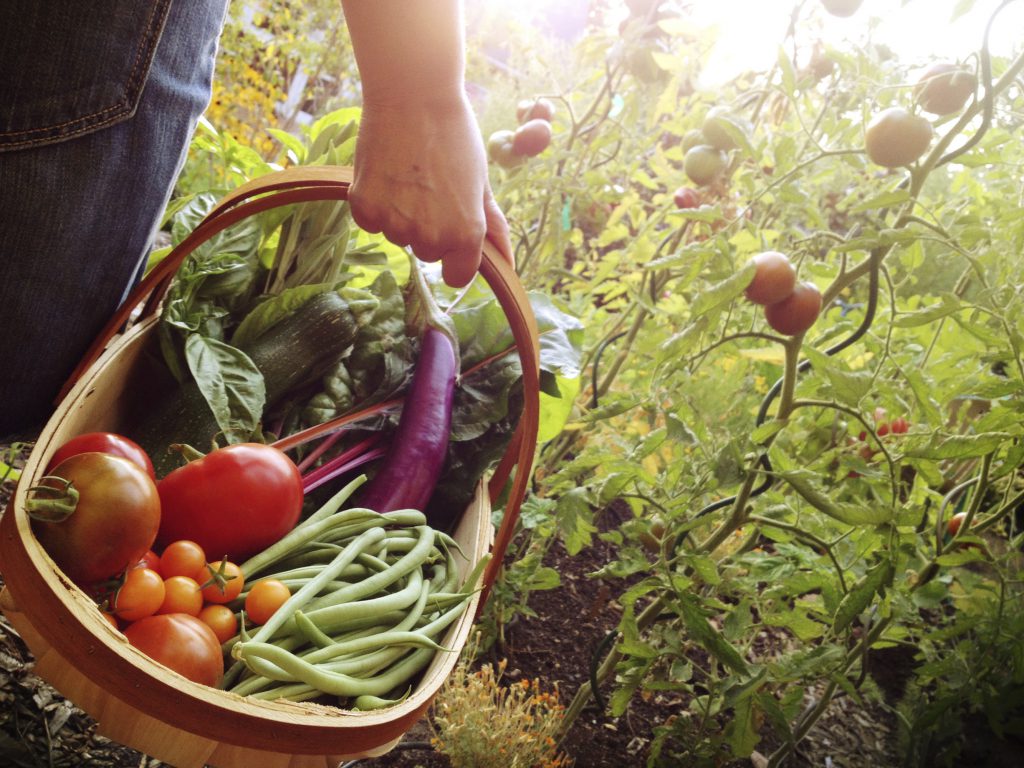Eating with the Season: Community-Supported Agriculture

There is no shortage of confusing and conflicting information when it comes to nutrition, but if there is one thing we can all agree upon, it’s that eating a variety of nutrient-dense fruits and vegetables is key for optimal health! Fortunately, most of the country is now in the midst of the season where fresh fruits and veggies are ripe for the picking.
While many of us are used to getting produce at the grocery store, there is a local movement changing the way we gather our food. Some families look forward to their weekly trip to local farmers markets, while others grow food in their own backyard. And yet, for a growing number of people, there is another exciting and economical option: Community-Supported Agriculture, often referred to as CSAs. How does it work, you ask? Here’s the scoop:
As a member of a CSA, you pay for all of your produce, otherwise known as a “share”, upfront at the beginning of the season. A typical share for a family of 3 usually ranges between $450 to $650, which directly supports the farmer(s) growing your food and reserves your portion of the crops. This may sound like a lot of money, but depending on the share and number of people in your household, the price is typically $10-15 per person per week! The average share contains between 7 and 10 varieties of fruits and vegetables. Now, and here’s the kicker: you usually do not get to choose the fruits and veggies you get in your share. What you get depends on what is available that week. This might seem strange at first, but it is the perfect opportunity for you to try new foods and improve your creative skills in the kitchen, which is where true health transformation happens! It’s easy for all of us to get into a rut of purchasing the same produce every week, but don’t forget – we need a variety of plant foods to get all of the vitamins, minerals, phytonutrients and delicious flavors for optimal health! So here are some tips for using those CSA fruits and veggies that you may not have eaten before:
- Keep it simple! Fresh, organic produce is packed with flavor and not much is required to make it taste delicious. Try a simple stir-fry with coconut oil or sauté with high quality olive oil (be sure to keep the temperature at or below medium heat if using olive oil). Add some sea salt or tamari sauce, fresh ground black pepper, and any other herbs and spices you enjoy. This works especially well with green leafy veggies.
- Reverse planning. Many of us plan a shopping list and then go to the store or market. I encourage you to do the reverse and wait until you get your weekly share before making your shopping list. Once you have your box of goodies, then you can plan your meals around the food you have. Talk about eating with the season!
- Roast it. If there is one way to cook almost any veggie that will make it undeniably delicious, it’s roasting. Roasting brings out the natural sweetness and often creates a crunch when the edges become slightly browned. Simply drizzle your veggies with some high quality unrefined oil, sea salt, pepper and maybe even a bit of balsamic vinegar. Roast at 475 degrees F for about 20 to 30 minutes, and you’ll have a dish that even the kids won’t be able to resist.
- Preserve. When you have an excess of any fruit or veggie, think about ways to keep them from spoiling (because real food should spoil!). This might require canning or freezing. Here are tips on how to preserve fresh food: https://monroe.cce.cornell.edu/nutrition/food-preservation
- Make soup or broth. Soups are exceptionally healing and nourishing dishes which can last you and your family several meals. They are also easy to freeze if you have extra!
Besides receiving a box of fresh, local produce, there are a few additional benefits of being part of a CSA:- You eliminate the middlemen – your money is supporting your community and not the national network needed to deliver food to your store (e.g. transportation expenses, retailers, brokers, etc.).
- You cut down on synthetic packaging material, especially plastics.
- You prevent toxins from entering the air by way of long-distance transport.
- You support fair farming wages.
Perhaps the most wonderful part about joining a CSA is the fact that it reminds you each week that you are part of something larger. You are supporting sustainable farming practices within your community which improves the quality of the soil, our food and our environment, and therefore, the quality of our lives. Click here to find a CSA near you: https://www.localharvest.org/csa/. If you missed the summer share, don’t worry! Many CSA’s offer shares year-round, so now is your time to reserve a spot for next season!
Yours in wellness,
Lisa

